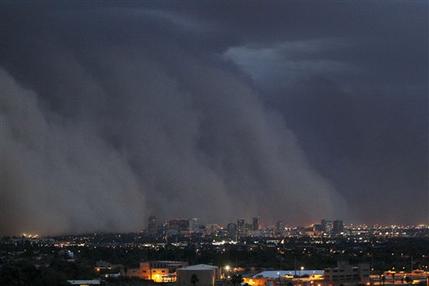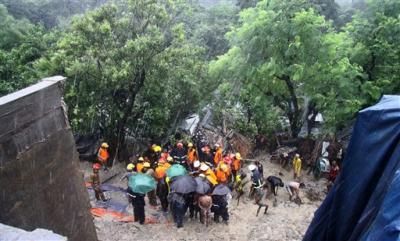
© Rob Schumacher/The Arizona RepublicA giant dust storm covers Phoenix, Ariz., Tuesday, July 5, 2011.
Arizonans are calling it the mother of all dust storms.
The mile-high wall of ominous, billowing dust that appeared to swallow Phoenix and its suburbs is all that locals can talk about.
It moved through the state around sundown Tuesday, halting airline flights, knocking out power to nearly 10,000 people, turning swimming pools into mud pits and caking cars with dirt.
The sky was still filled with a hazy shade of brown Wednesday as residents washed their cars and swept sidewalks.
Because dust storms, also known by the Arabic term
haboobs, are so hard to predict, Tuesday's took everyone by surprise.
Seemingly out of nowhere, the 100-mile-wide storm moved like a giant wave, the dust roiling as it approached at up to 60 mph. Once it hit, visibility dropped to zero in some areas, the sky turned nearly black, trees blew sideways, and even downtown Phoenix skyscrapers became invisible.
"Just the height of it looked like a special-effect scene from a movie, like a dust storm out in Africa," said Charlotte Dewey, a National Weather Service meteorologist in Phoenix. "It looked so huge, looking at the city down below, it was just specks of light and miniature buildings.


